

What is Jade
Generally speaking, jade has a narrow sense and a broad sense. In the narrow sense, jade has two types: jadeite and nephrite. Jadeite is mainly emerald, and nephrite is mainly Hetian jade. In a broad sense, jade includes not only nephrite and jadeite, but also Dushan jade, Xiu jade, aventurine, agate, turquoise, lapis lazuli and so on. Summarize in one sentence: the warm and shiny beautiful stones can be collectively referred to as those that can serve our material, economy, life, and use.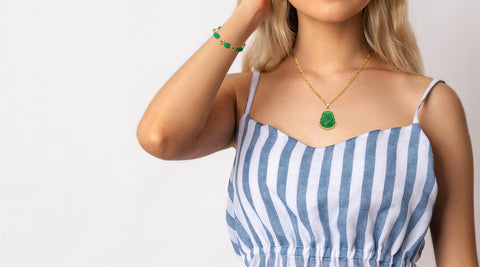
How to judge the quality of jade
To judge the quality of jade, there are four criteria:
1. Have a certain degree of hardness
2. Beautiful colors, monochrome and colorful
3. Luster and warm
4. From opaque to translucent (sub-transparent or transparent).
How many types of jade
1. Jadeite
Jadeite is a kind of jadeite, mainly produced in China, Burma, Thailand, Japan, and the United States. Because it contains different color-causing ions inside, it shows a variety of colors. For example, when it contains chromium, it appears green, which is called Cui; while containing iron, it shows red, yellow, maroon and other colors, which is called emerald. The hardness is generally between 6.5 and 7, and the density is between 3.2 and 3.4. It has strong toughness, second only to Hetian jade, and is generally glassy to oily, opaque, slightly transparent, translucent, transparent and so on. Colors range from green, red, blue, purple, white, yellow, blue, black, etc. In terms of texture, there are glass ground, ice ground, waxy ground, hibiscus seed, white ground green, anthocyanin, oil green, golden silk seed, bean seed, dry green seed, horse tooth seed and so on. In the daily evaluation of jadeite, it is generally evaluated from the aspects of species, water, color, transparency, cleanliness, density, cotton cracking, size, design craftsmanship, etc. Of course, if perfection is required, the value must be a sky-high price. For ordinary consumers, the first choice is a good kind of jade, which is what we usually call "the second symbol of the first virtue" or "the expert sees the kind, the layman sees the color" in the industry. The texture is good and the kind is good. This is the purchase Jade standard. Of course, for some stuff, although it is normal to grow water, full color or even green color can also be used as a purchase option. For non-collection consumers, when buying ordinary jadeite, as long as it is natural jadeite with very few cracks, impurities, and dirty colors, it is enough for you to like it and wear it to bring a good mood and fashion to show your personality. It is in line with "The beauty of jade is pleasing to everyone".
2. Hetian jade
Hetian jade and nephrite, the first of the four famous jade in China, occupy the first position in terms of jade quality or history and culture. It has close ties with Chinese culture, politics, economy, art, etc. It has been widely used in the Shang Dynasty of China, and as a result, China's unique jade culture has emerged. The seed material produced in the Hetian area of Xinjiang, China has the best texture, with a hardness of 6 to 6.5 and a density of 2.8 to 3.1. The toughness is the strongest among all jade, so it is not easy to damage. The luster is generally glass and grease luster, from opaque to translucent, the color changes greatly, including white, blue and white, cyan, yellow, green, black, etc. Therefore, from the color, there are white jade, sapphire, jasper, topaz, black jade, Sugar jade and other types are divided from the place where Hetian jade is produced, and can be divided into seed material, mountain flowing water, mountain material, and Gobi material. Among them, seed material is the most precious and has the highest collection value. At present, there are not many real seed materials, and the price is basically calculated in grams. Let me explain below, the real three-level white Hetian seed material, the oil is average, and the white background is three-level. , Toughness mid-range, average carving, no leather color, very few jade, such as lines, cracks, stiffness, cotton, etc., if there are 10 grams, the lowest price of things like this is also 800 yuan, sometimes like suet white Seed material, one gram of one or two thousand yuan is very normal, one gram of gold, when you buy the so-called lanolin or one, two and three grade white "seed material" when the weight is heavy, the whiteness is good, and the price is still super cheap, Don't think about it, there must be fraud, so now there is a large share of counterfeit and counterfeit seeds in the market. Please pay attention to this point! Generally, when appreciating Hetian jade, you can consider the whiteness, oil content, texture, hardness, toughness, leather color, gloss, brightness, weight, cracks, design and carving. When collecting Hetian jade, either whiteness, leather color, novelty, oil, pretty color, or carving, anyway There are so many varieties, each with their own reasons and viewpoints for collecting. I think no matter how you collect, if economic conditions allow, as long as it achieves the purpose of seductive, sentiment, spiritual, communication and culture.
Remember the four major misunderstandings of the Hetian jade collection: "Respect the past but not the present, the color but not the luster, the surface but not the quality, and the materials but not the craftsmanship".
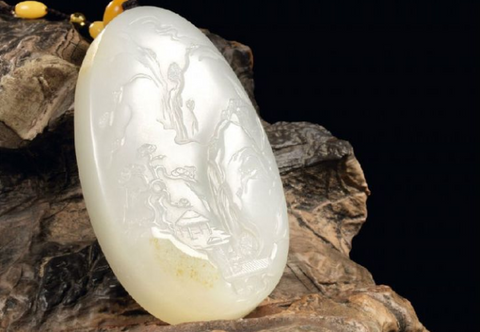
3. Dushan jade
Dushan jade is produced in Dushan, Nanyang, Henan. Dushan jade is also known as "Oriental Jade". At the annual jade carving festival, we often see some single jade with aquatic emerald green color. It is regarded as jade by many tourists.
The texture of single jade is tough, dense, delicate and soft, and it has many colors. The colors are green, white, red, yellow, purple, blue, black, sauce (potato color), etc., and there are all kinds of colors. There are often more than two kinds on a single jade. Color composition, this is also the biggest characteristic of Duyu. Hardness 6~6.5, similar to Hetian jade, density 2.7~3.1, glass luster or grease luster, opaque to translucent, it is very easy to identify it, A, the color is more mixed; B, fine grain; C, any piece of jade Generally, multiple colors can be seen at the same time on materials or jade pieces. When appreciating and evaluating it, it is generally considered from the aspects of color, texture, weight, and impurity cracks.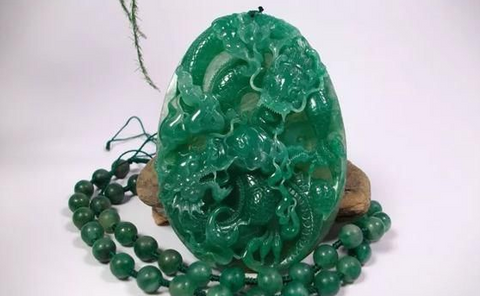
4. Xiuyu
Xiu jade is produced in Xiuyan, Liaoning, one of the four famous jade in China. The most famous piece of jade on the golden jade garment unearthed from the tomb of Jing Wang Liu Sheng in Zhongshan during the Western Han Dynasty is also part of Xiuyu. In the Neolithic Age, Xiuyu jade has been widely used and made into various products. The typical example is the jade dragon in the Hongshan culture.
Xiuyu is dominated by serpentine, and the colors are green, yellow-green, white, purple, blue, ink and so on. The hardness is 2.5 to 5.5. The density is 5.5-2.8, opaque, translucent and fully transparent, and the gloss is waxy luster. When you appreciate and evaluate it, it is measured by color, texture, transparency, weight, cracking impurities, etc. Among them: the best Xiuyu is green or yellow-green, translucent, very delicate in texture, with very few cracks and impurities. Because Xiuyu jade has abundant domestic reserves and large mining volume, the relative price is also very low. Generally, its counterfeit products are mainly made of glass, stone powder pressing, etc. It is also very easy to identify. The color of stone powder is too single, too pure, without luster, and it does not have the texture of jade. The density is small, and it is light and easy to hold. It can be felt; while the glass replicas are astringent to the hands, unlike Xiuyu's smooth hands, and the most obvious, the glass replicas generally have bubbles in the light, which is very easy to identify.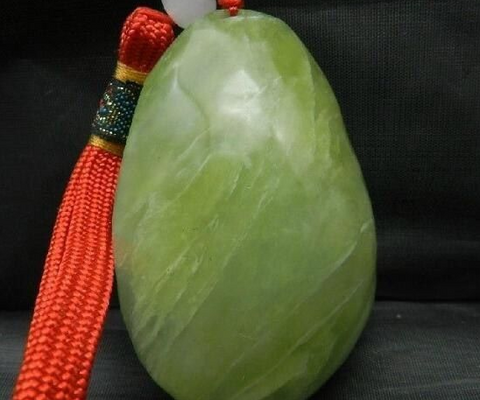
5. Turquoise
Turquoise is also called "Turquoise jade". Turquoise is not produced in Turkis. In ancient Persia, it was originally shipped from Turkis to Europe, so it was so called. According to the collection of tombs unearthed in our country, it was known by the ancients of our country in the Neolithic Age. Among the cultural relics unearthed from the Yangshao Cultural Site in Dahe Village, Zhengzhou, there are two turquoise fish-shaped ornaments. Turquoise was also found during the Northern and Southern Dynasties. In the Qing Dynasty, it was called the "jewel of heaven", which has auspicious meaning. Only such jade can be inlaid on the hats of the emperor and the queen mother.
As one of China's four famous jade, turquoise is mainly produced in Hubei, also known as "Xiangyangdianzi" in ancient times. Turquoise is also produced in Xinjiang, and it is also produced in Iran, Egypt, the United States, Russia, and Australia. The basic color of turquoise is sky blue or green, mainly containing hydrated copper aluminum phosphate, hardness of 5.5-6, density of 2.4-2.9, glass or grease luster, opaque, fine texture, poor toughness, and Several colors such as blue, light blue, cyan, green, dark blue, etc. On the basis of green or blue on its main body, you can see irregular white stripes or patches, which are composed of quartz white mineral components. Of course, the black textures or black blocks that you see are composed of iron ore components. .
Generally, the identification of turquoise is very easy. The main body is sky blue, dark blue, and green, opaque, with irregular white or black stripes or patches. Basically, other jade stones are relatively difficult to confuse with it in this appearance. The only difficulty in the identification of turquoise is whether it is natural or artificial. There is a relatively simple method, but it has only been tested on synthetic turquoise and injection molded turquoise. Other counterfeit products have not been tested. The method is to use The knife is used to draw turquoise, because its hardness is relatively large, so the knife is generally immobile. If it can be moved, then friends can think for themselves whether it is true or false.
6. lapis lazuli
Lapis Lazuli, the main producing area in Afghanistan, Russia also produces more. In ancient times, it was also called "Golden Bi". Russian lapis lazuli contained a lot of pyrite. Blue refers to this noble sky blue, and gold refers to this golden color. Therefore, there is the term cyan, generally It is said that lapis lazuli has a hue like the sky, with pure and deep sky blue, so it is liked by the emperors of the past. In the funeral of ancient emperors, there are lapis lazuli, and you can look forward to the path to heaven. In ancient times, people grind it into powder for painting. In the paintings of the Thousand Buddha Caves of Mogao Grottoes in China, lapis lazuli was used as the paint, so you can see how precious it is. There is a variety of lapis lazuli called the birthstone, which generally does not contain pyrite, and it is mixed with white calcite. If there are pregnant women, as long as they see this kind of lapis lazuli, it will play a role in promoting birth, I don’t know. Is it true or false, ha ha, interesting but helpless. Just think about it, if there is such a function, then the delivery room of the hospital can be unnecessary, and women who are fast delivery can only see this lapis lazuli every day.
Lapis Lazuli, hardness 5-6, density 2.7-2.9, color is mainly blue, with white patches, opaque, glass and grease luster, generally white calcite blocks or white lines or yellow patches of yellow iron on the surface mine. It is because of these unique colors, blue, white, and yellow, that they are very easy to distinguish from other jade. Many fake lapis lazuli, mostly synthetic lapis lazuli and sodalite, have a light hand feeling, and the synthetic lapis lazuli feels too uniform in color , Artificial white or yellow patches are relatively evenly distributed on the main body, while natural lapis lazuli has uneven color, white and yellow patches have different sizes and uneven contours. Natural lapis lazuli can appear blue halo under the light.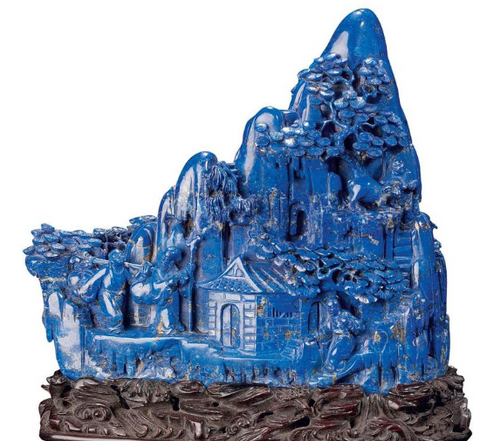
7. Crystal
Regarding crystals, many friends may have one or two crystal jewelry. Is crystal jade? From the perspective of the mineralogy of jade, jade is a collection of minerals, while crystal is only a single mineral crystal, called a single crystal, so it cannot be called jade, but can only be called a gem. Therefore, if you simply speak from mineralogy or geology, crystal certainly cannot be included in the ranks of jade, so many jade materials used in traditional Chinese history and culture may not be included in the ranks of jade. For example, the turquoise, lapis lazuli, and single jade mentioned above should not be included in jade. Therefore, since ancient times, what is jade? What is jade? What is the standard? It is estimated that no one will be able to explain clearly what the dividing line is. In terms of the concept of jade, jade is an aggregate composed of one or more minerals, such as turquoise, solo jade, and crystals can be summarized.
Do not deviate from the traditional Chinese history and culture, and respect the existing historical facts of using jade in ancient times. All jade materials that have been used for various purposes in China since ancient times are used by the ancients and the modern jade culture jade carving industry The materials that people adopt can be used as jade. It can also be said to be jade in a broad sense. According to this definition, crystal, chalcedony, agate, malachite, etc. can all be regarded as jade.
Crystal, the jade with silicon dioxide as the main component, ancient people called water jade, water essence, thousand-year ice, etc., have been used in the new era of stone generation. The colors are diverse, complex, translucent, and transparent. Glass luster, high hardness, 6.5~7, density 2.6~2.66. Colorless crystal, pure color amethyst or water gall crystal are precious! Transparent quartz crystals, pure colorless white, different colors containing impurities, divided into amethyst, citrine, smoky crystal, citrine and so on. Different crystals have different uses and functions, such as promoting wealth, increasing prosperity, curing diseases, relaxing, lucky, and avoiding evil. Anyway, there are many articles like this on the Internet.
A few words about crystals, some man-made crystals are more expensive than natural ones, such as crystals represented by Swarovski, this must be understood. There is also the simplest way to identify glass imitation crystals is to look at the inside. Although the glass imitation is clean and transparent, it can be seen that there are bubbles inside, the hardness is small, and the hand feels light.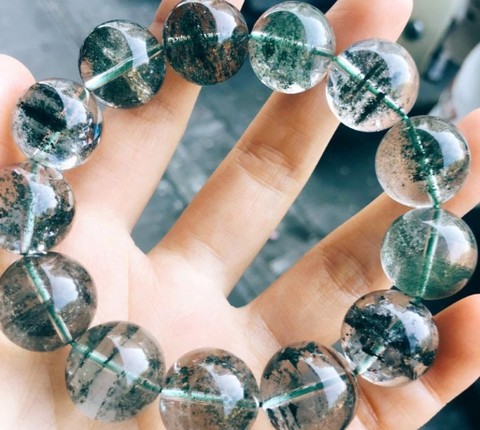
8. Agate and Carnelian
Agate, carnelian, and crystal are all silica jade, which is also a kind of chalcedony. It is one of the earliest gem materials used in the history of human jade culture. The material is very strong, so someone once said that in Liangzhu and Wenshan During the cultural period, there were no tools for carving jade with relatively strong metal. Therefore, strong materials such as agate and shark teeth may be tools for carving jade at that time. This is what we often said later, "the stone of other mountains can be attacked." Source of "Jade". Among the unearthed jade, strings of agate beads are more common for necklaces.
Agate is produced in many places, with large output and low price. The most famous one is Brazil's red agate. India, China, the United States, Russia, etc. are all produced. The general colors are red, blue, purple, transparent, white, pink, blue, gray, brown, black, etc. Since ancient times, there has been a well-known saying in our country: "Thousands of agate, ten thousand kinds of jade" can be seen from this sentence There are many varieties of agate, generally translucent to opaque, with a hardness of 6.5 to 7 degrees and a specific gravity of 2.55 to 2.91.
It is also some information that we learned after communicating with the merchants who make agate products during the jade scouring process. Generally, we usually see many colors of agate, most of which are produced by high-temperature roasting in the later stage. That is to say, choose some gray, white, Light-colored agate raw materials, according to people's needs, are roasted at a high temperature in the later stage, and then form agates of various colors. The color of the roasted agate is uniform, single, and the color band edges are gradually changed, unlike natural agate. The band is clear and clear. Generally speaking, this high-temperature roasted agate has no necessary internal structure and has no effect on the internal crystallization. Therefore, it is no different from natural agate in nature. In the identification, it is still issued as natural agate. Identification, so the price of roasted agate is similar to that of natural agate.
There are many spiritual sayings and functions about agate. There are many on this website. As for the difference between agate and chalcedony, it is relatively simple. It depends on the stripes and stripes of the jade itself, and the striped agate, if the jade body has no stripes. And the one that is uniform and opaque is called chalcedony.
More about this source textSource text required for additional translation information
